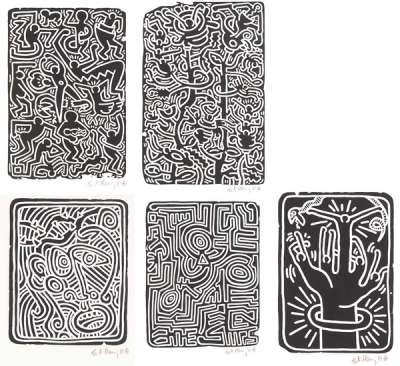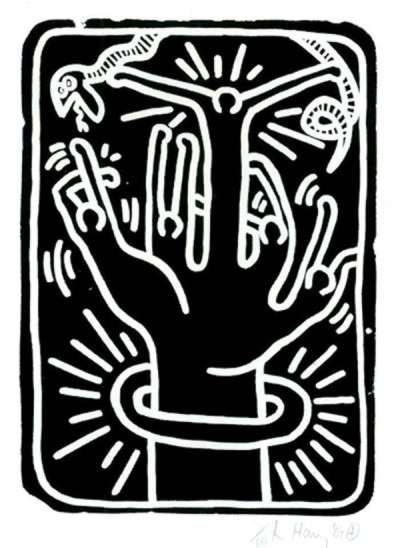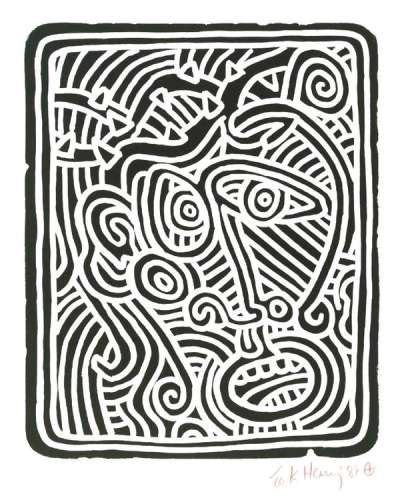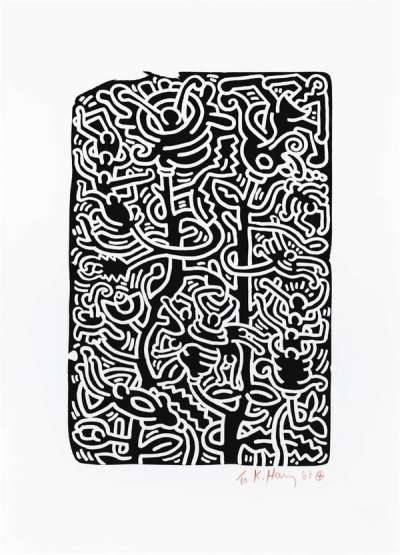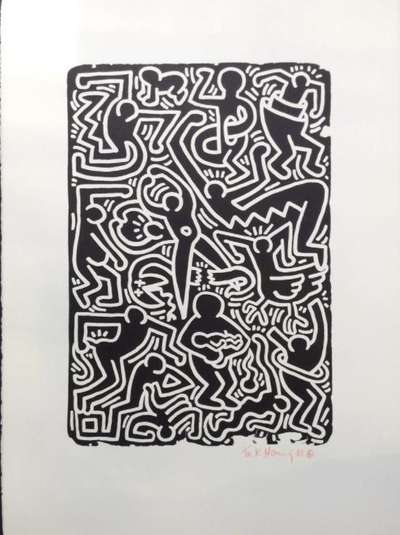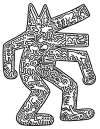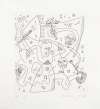Stones
In 1989, one year before his death, Keith Haring created his labyrinthine print series titled Stones. It marked a late return to lithography, which he used initially before turning to screen-printing for most of his career, as well as recalling his early subway drawings, also black and white.
Keith Haring Stones For sale
Stones Market value
Auction Results
| Artwork | Auction Date | Auction House | Return to Seller | Hammer Price | Buyer Paid |
|---|---|---|---|---|---|
 Stones 1 Keith Haring Signed Print | 3 Feb 2025 | Bonhams Cornette de Saint Cyr | £7,225 | £8,500 | £11,500 |
 Stones 2 Keith Haring Signed Print | 3 Feb 2025 | Bonhams Cornette de Saint Cyr | £8,500 | £10,000 | £14,000 |
 Stones 3 Keith Haring Signed Print | 3 Feb 2025 | Bonhams Cornette de Saint Cyr | £8,500 | £10,000 | £14,000 |
 Stones 4 Keith Haring Signed Print | 26 Jun 2024 | Germann Auctions | £8,925 | £10,500 | £12,500 |
 Stones (complete set) Keith Haring Signed Print | 28 Sept 2022 | Christie's London | £38,250 | £45,000 | £60,000 |
Sell Your Art
with Us
with Us
Join Our Network of Collectors. Buy, Sell and Track Demand
Meaning & Analysis
Keith Haring's monochrome, labyrinthine, print series Stones, was created in 1989, a year before his death from AIDs related complications. Notable for their labyrinthine designs, the prints in Keith Haring’s Stones series are striking examples of the Pop artist’s ability to create complex images while maintaining the simplicity of line. Though the lithographs were produced at the end of his life they evoke his beginnings as an artist, the white on black lines recalling his earlysubway drawings that originally made his name in New York.
Characteristic of Haring’s oeuvre, these works maintain a simple line within a complex design informed by eastern and western art history. From the Ecce Homo tradition in Renaissance painting and the labyrinth of Greek mythology to the Nazca lines of South America and the bold designs of Aboriginal art, Haring borrowed from a number of sources to come up with his own unique style. With this marriage of influences, the Stones series can be seen as the epitome of Haring’s hybrid style.
Throughout his career he worked extensively with print as a medium. Beginning with lithography he then turned to screen printing to concentrate on the possibilities the technique offered in terms of colour and large edition sizes. However later in his life he returned to lithography to make monochrome series such as Stones. To make a lithograph the artist usually draws directly onto a stone or metal plate which is then dampened with water and covered in ink. The resulting image can be printed a number of times. This series, produced in an edition of 60, shows Haring’s complete mastery of the medium, his bold lines strikingly reproduced just as effectively as in his paintings.
